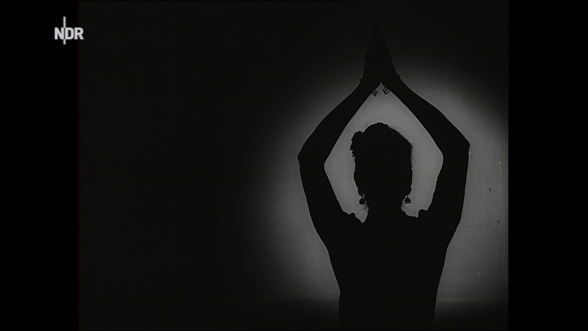Workspace - Unterrichtsmaterialien
Thematic Archive Walk
Cultural Transfer
Pfade und Programme
The Fifth Wall - Thematic walk through the archive on:
CULTURAL TRANSFER
Developed by Dr. Rubaica Jaliwala
The digital archive, The Fifth Wall, is a treasure trove of material comprising films, reportages, texts, letters, photos, which is a tremendous resource to discuss themes of interculturality and diversity, gender, racism and migration and to explore strategies to transform hierarchies.
This thematic walk on CULTURAL TRANSFER is just one example of how the archive can be used for educational purposes. Accordingly, the sessions, process and flow of the thematic walk can be adapted to different settings, contexts and target groups. The programme below can be made interdisciplinary by presenting the archival material within a theoretical framework and using an interactive training methodology.
I. Introduction
1. Trainer introduction
2. Explain the flow and process of the session
3. Brief introduction to the theme
II. Understanding cultures
1. Commentary: CLICHÉS, 2004 (00:47 mins)
Discussion questions:
That was way back in ’62, this was how Asia and India were presented in Germany. Do you think clichés are still used in films and TV to represent another country, whether in India, Germany or elsewhere?
2. Commentary: LIVING WITH CONTRADICTIONS, 2004 (00:46 sec)
Discussion questions:
-So jumping straight from clichés to complexity, what does this tell us about German society and Indian society?
-What do we need in order to understand another person, group of people or culture better?
-How can we present another culture better?
III. Cultural transfer: An insider’s outside view
1. Film excerpt: BHARATA NATYAM - INDIAN TEMPLE DANCE, 1967: 04:11 - 06:54 (2:43)
In 1967, Sundaram’s first feature for NDR’s Third Programme introduces the classical Indian temple dance Bharata Natyam to German television audiences.
Discussion questions:
-What strikes you about this excerpt?
-How has Navina tried to describe Bharata Natyam?
-Why did she do it this way?
2. Letter: WORK ON THE FILM “BHARATA NATYAM, DATED 23.12.1965
Discussion questions:
-Why would this kind of presentation suit German audiences more?
IV. Cultural transfer: An outsider’s inside view
1. Film excerpts: ON THE PATH TO BLISS, 1970
For the broadcasting series “Faith and Thought”, Sundaram directed a feature on the growing number of followers of Hindu teachings and meditation practices in Germany. The film accompanies a group of young US monks on a missionary tour in Germany on behalf of the International Society for Krishna Consciousness, visits a yoga centre in Heidelberg and the founder of Transcendental Meditation, Maharishi Mahesh Yogi, at an event in Germany.
Excerpt 1: 12:01 - 21:26 (9:25 mins)
Excerpt 2: 23:57 - 27:15 (3:58 mins)
Discussion questions:
-What do you think of the two excerpts?
-Why was there such a fascination with India (which still continues) and the Hare Krishna movement? What were people seeking?
-What is Navina seeking through this film?
-How has Navina portrayed them?
2. Letter: FILM ON HINDUISM, JONAS MEKAS, DATED 22.08.1969
Discussion question:
Why do you think it was so difficult to get through an unconventional ending, a “ponderous conclusion”?
3. Film excerpt: ASYLUM IN THE FEDERAL REPUBLIC, 1982: 00:00 - 1:30 (1:30 mins)
In Parliament, the CDU argues that Germany is neither a multi-ethnic state nor a country of immigration, prompting the “Panorama” editorial team to request a non-German journalist - Navina Sundaram - to comment.
Discussion questions:
-Who is Navina representing here?
-Should an immigrant have presented or commented on it or should it have been a German?
4. Commentary: WHOSE STORY IS IT?, 2004 (2:09 mins)
Discussion questions:
-As seen in the excerpt “Asylum in the Federal Republic of Germany” and in the article for “Import Export”, why was it a problem that Navina often became “the other eyes”?
-Why was it okay for her to do a film on an SS doctor from Auschwitz but not a programme on Lower Saxony politics?
-How relevant are Navina’s experiences in the present day?
-Who should host or moderate for whom, for which audience and on what subjects?
-What should the focus be on instead? (e.g. on who speaks or how something is discussed, what is said and whether it is contextualised)
V. The view at eye level
1. Commentary: THE VIEW AT EYE LEVEL, 2018 (2:11 mins)
Discussion questions:
-What is the problem with sending in people from abroad to do a reportage?
-Whose perspective should it be from?
2. Commentary: PUBLIC TELEVISION, 2018 (2:27 mins)
Discussion questions:
-What is key to media coverage or documentary filmmaking? (e.g. contextualising, looking beyond clichés, taking on different perspectives, an eye level view).
And how do you get that view at eye level?
On an interpersonal level:
3. Film excerpts: SUMMER GUESTS, 1983
The well-known Indian artist Vivan Sundaram, brother of the filmmaker, initiates a German-Indian Art Camp in the family home in Kasauli in the Himalayas, where artists from both countries live and work together over a summer. The film observes the everyday life of this self-organised cultural exchange, which is by no means idyllic. Cultural imperialism and inequality shaped by colonialism are addressed, as well as eurocentrism and confrontation with the harsh social reality in India.
Excerpt 1: 18:53 - 30:14 (11:61 mins)
Excerpt 2: 33:29 - 37:45 (4:16 mins)
Discussion question:
-How were the German artists different from the Indian artists?
-What does it take for a successful cultural transfer?
4. Commentary: INGE MAHN ON SUMMER GUESTS, 2021 (4:58 mins)
Discussion questions:
-Why, according to Inge Mahn, was art the disturbing factor? What role does the term ‘art’ play in cultural misunderstandings?
-What can you take from Inge Mahn’s commentary as she reflects on her experience as a summer guest in 1983?
On a personal level:
5. Commentary: WHERE IS HERE?, 2004 (1:00 min)
Discussion questions:
-How is Sundaram’s statement about taking your “here” and “there” related to culture and cultural transfer?